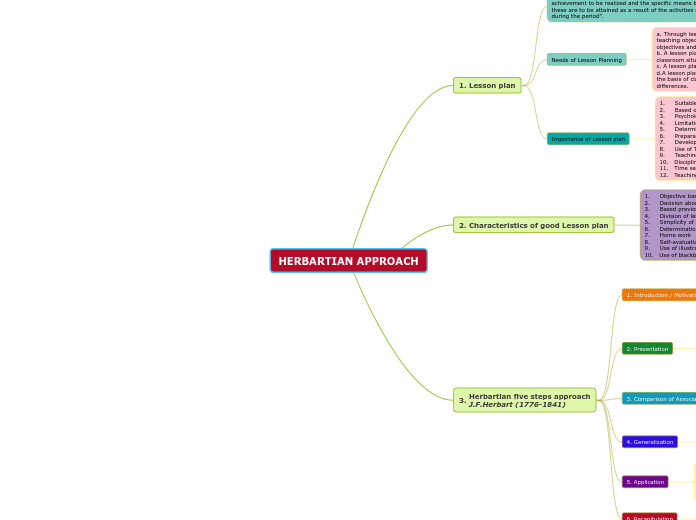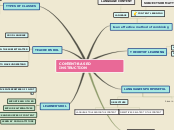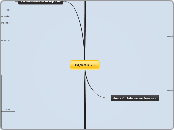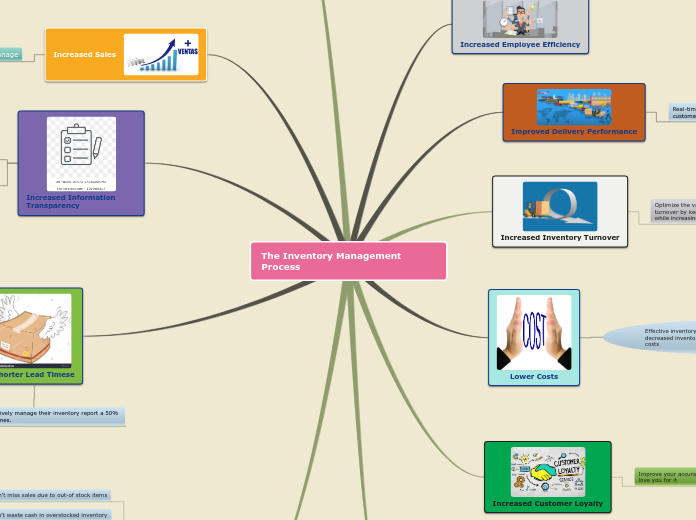Social Reconstruction
Social Reconstruction Curriculum
- The aim of this curriculum is social change.
- It focuses on social reform and on generating “a better future for society” (McNeil, 1996) by focusing on social needs over individual needs.
- Students are encouraged to employ their interests and skills to find solutions to the problems of society by cooperating with the community and using its resources.
- Teachers select real-life experiences for their students, which are focused on the community, or is an issue that is of a public concern, and an experience that is valuable where students can develop a sense of purpose for the self and the community.
- This type of curriculum evaluates students’ abilities by assessing their “articulation of issues, generation of possible solutions, redefinition of their world views, [and their] willingness to take action toward an ideal” (McNeil, 1996).
Problem Centered
- All three forms of assessment used (assessment for, as and of learning)
- Based on conversation, observation and product (anecdotal notes, rubrics, checklists)
- Self assessment and reflections
- Journal writings, Essays (explaining thoughts and experiences)
- Portfolios
- Presentations
- Constant descriptive feedback from teacher
- Assessment has a purpose, measurement, interpretation, and use
- Inquiry Based Learning
- Teacher acts as a facilitator
- Students take part in problem solving - can be done independently or collaboratively
- Group discussions/ debates
- Three part lesson design (introduction - introduce the problem, work on the problem - strategize, and consolidate - review and present)
- Awaken and empower creativity
- Planning with social needs in mind
- Focus on problem solving, relating to real life situations (societal and community problems)
- Problems based on students' concerns and experiences
- Focus on environmental, political, global issues
- Create a climate of possibilities
Learner Centered
- All three types of assessments are conducted (assessment for, as and of learning) with a deeper focus on assessment for and as learning
- Diagnostic assessment conducted to see where students are and determine where they need to be
- Constant feedback provided after assessments
- Students assessed through conversation, observation and product as they are learning (rubrics, checklists, anecdotal notes)
- Students take part in self assessment and reflection
- Student take part in choosing outputs (e.g.: projects)
- Reporting to Parents: student journaling, portfolios, student led interviews
- Students should have set goals, self-regulate, and have self-efficacy
- Assessment has a purpose, measurement, interpretation, and use
- Inquiry Based Learning
- Student led activities based on their interests, needs, and learning styles
- Teacher creates ill structured environment which ignites learning
- Teachers guide and facilitate learning, probing with questions, and enhancing students' learning experience
- Adapt and respond in order to challenge students
- Awaken and empower creativity
- A teacher should mentor, stimulate, and provoke, not just pass on information
- Planning based on Rousseau's development idea - to encourage the growth of the mind
- Planning is based on student interest - teachers observe students and cater lessons to meet their needs
- Work backwards- plan for inquiry and take student input
- Plan according to students' development level and learning style
- Create ill-structured environment - planning is flexible (student led)
- Integration of subjects
Subject Centered
Assessment
- Focus is on Assessment of Learning
- Assessment is structured- students complete the same test, activity, or task
- Standardized testing
- Assess specific subjects and knowledge of subject matter
- Tests/ quizzes used often for assessment
- Assessment has a purpose, measurement, interpretation, and use
Instruction
- Lecture style and teacher led instruction
- Academic focus - worksheets/ textbook work
- Students take part in independant work
- Guided activities led by the teacher
- Subject matter is forced
Planning
- Based on Plato's academic idea - designed to teach the knowledge that is of most importance
- Goal is to have students master each subject
- Preplanned and detailed
- Structured and defined
- Subject specific planning with little integration
- Knowledge based - planning with the use of textbooks
- Planning focus is on academic needs and how to get curriculum content across to students
- Planing can be a backwards design model
References
References:
- Al Mousa, N. (2013). An examination of cad use in two interior design programs from the perspective of curriculum and instructors, pp. 21-37 (Master's Thesis)
- Hayes, D. (2003) Making learning an effect of schooling: aligning curriculum, assessment and pedagogy, Discourse: studies in the cultural politics of education, 24(2), 225-245
- Hill, A. M. (1994). Perspectives on philosophical shifts in vocational education: From realism to pragmatism and reconstructionism. Journal of Vocational and Technical Education, 10(2), 37-45.
- McMillan, J. H. (2014). Classroom assessment: Principles and practice for effective standards-based instruction (6th ed., pp. 1-20, 57-64,74-88). Boston, MA: Pearson.
- McNeil, J. D. (2006). Contemporary curriculum in thought and action (6th ed., pp. 1-13, 24-34, 44-51, 60-73). Hoboken, NJ: John Wiley & Sons.
- Ornstein, A. C. (1990/1991). Philosophy as a basis for curriculum decisions. The High School Journal, 74, 102-109.
- Ornstein, A. C., & Hunkins, F. P. (2013). Curriculum: Foundations, principles, and issues (6th ed.). Boston, MA: Pearson. Read Chapter 6, pp. 149-173.
- Sowell, E. J. (2005). Curriculum: An integrative introduction (3rd ed., pp. 52-54, 55-61, 81-85,103-106). Upper Saddle River, NJ: Pearson.
- Shepard, L. A. (2000). The role of assessment in a learning culture. Educational Researcher, 29(7), 4-14. doi:10.3102/0013189X029007004
Cognitive Processes/ Humanistic
Humanistic
The Humanistic Curriculum:
- Favors the concept of individualism (Eisner & Vallance, 1974; Marsh & Willis, 2007; McNeil, 1996; Pratt, 1994; Sowell; 2005).
- Its purpose is to help learners know and discover who they are. This is accomplished by providing them a satisfying experience that contributes to personal liberation, development, and growth (McNeil, 1996).
- Learners develop good character and demonstrate good work qualities.
- In this curricular conception, teachers have a dual role to provide “warmth and nurture emotions” and to be a “resource center” to students (McNeil, 1996). They must build a relationship with their students.
- This curriculum evaluates the process of learning rather than its end product. It sees that classroom activities are valuable and allow students to discover their own abilities.
Academic
Academic Rationalism Curriculum:
- The academic rationalism conception sees the curriculum “as the vehicle by which learners are introduced to subject matter disciplines and to organized fields of study” (McNeil, 1996).
- The purpose of academic rationalism curriculum is to make the students thinkers; thinkers that can question, hypothesize, synthesize, and draw conclusions in any academic discipline.
- However, the academic rationalism curriculum fails to integrate disciplines and it imposes adults' views of the subject matter on younger students.
Link between Conceptions of Curriculum, Philosophical Foundations and Curricular Designs
Contemporary Philosophy
Technology
Technology
A number of theorists have identified Technology as a conception of curriculum. Under the overlying Technology heading, we see topics such as the following:
- Technology/Cognitive processes
- Systemic or technology
- Technology
According to Al-Mousa (2013) the Technology heading takes into account the use of technology to communicate knowledge. It is
concerned with how to teach rather than what to teach and looks at best methods to maximize student achievement by making learners systematic and efficient.
Technology as Curriculum Design
Technology as a Curriculum Design:
- Focuses on the process and with the "how" rather than the "what" of education.
- It aims to use technology to communicate knowledge and facilitate learning by focusing on the presentation of material to the learner rather than on the learner (McNeil, 1996)
- Uses logical and concise language.
Society
A number of theorists have identified Society as a conception of curriculum. Under the Society heading, we see topics such as the following:
- Social reconstruction-relevance
- Descriptive/ Critical-exploratory (Enacted/Experienced)
- Social reconstruction
- Social transformation
- Social-relevance reconstruction
According to Al-Mousa (2013) the Society heading takes into account that curriculum provides tools for students to survive in an unstable and changing world and stresses societal needs over individual needs. The goal is to help students develop socially and looks at problems society is facing and aims to change it. School is viewed as an agent for reform and technical procedures are less important than deliberative processes or practical reasoning.
Progressivism
Progressivism
Instructional Objective: To promote democratic, social living
Knowledge: Knowledge leads to growth and development; a living-learning process; focus on active and interesting learning
Role of Teacher: Teacher is a guide for problem solving and scientific inquiry
Curriculum Focus: Based on students' interests; involves the application of human problems and affairs; interdisciplinary subject matter; activities and projects
Source: Allan C. Ornstein and Francis P. Hunkins, Curriculum: Foundations, Principles, and Issues (Englewood Cliffs, N.J.: Prentice-Hall, 1988), p. 47 in Ornstein, A. C. (1990/1991). Philosophy as a basis for curriculum decisions. The High School Journal, 74, 102-109.
Reconstructionalism
Reconstructionalism
Instructional Objective: To improve and reconstruct society; education for change and social reform
Knowledge: Skills and subjects needed to identify and ameliorate problems of society; learning is active and concerned with contemporary and future society
Role of Teacher: Teacher serves as an agent of change and reform; acts as a project director and research leader; helps students become aware of problems confronting humankind
Curriculum Focus: Emphasis on social sciences and social research methods; examination of social, economic and political problems; focus on present and future trends as well as national and international issues
Source: Allan C. Ornstein and Francis P. Hunkins, Curriculum: Foundations, Principles, and Issues (Englewood Cliffs, N.J.: Prentice-Hall, 1988), p. 47 in Ornstein, A. C. (1990/1991). Philosophy as a basis for curriculum decisions. The High School Journal, 74, 102-109.
Pragmaticism
Pragmatism:
- This philosophy believes that education is based on individuals’ experiences with the world and educative experience.
- The teacher facilitates and emphasizes that student experiences are valuable.
- Its aim is to develop psychological and social aspects of the individual.
- Focuses on growth and student as an individual but in a social context
- Pragmatic teachers concerned with student motivation use problem solving and a project approach.
- A Pragmatic Curriculum – focuses on activity oriented approach and integration integration (Hill 1994).
Problem Centered or Society/ Culture Based Designs
Problem-Centered Design:
- The third major type of curriculum design, problem-centered design, focuses on real-life problems of individuals and society.
- Problem-centered curriculum designs are intended to reinforce cultural traditions and address unmet needs of the community and society (Ornstein, 2013).
- They are based on social issues.
Reconstructionist Design
Reconstructionist Design:
- Educators who favour reconstructionist design believe that the curriculum should foster social action aimed at reconstructing society
- It should promote society's social, political, and economic development. These educators want curricula to advance social justice (Ornstein, 2013).
Life-Situations Design
Life Situation Design:
- Three assumptions are fundamental to life-situations design
(I) Dealing with persistent life situations is crucial to a society's successful functioning, and it makes educational sense to organize a curriculum around them;
(2) Students see the relevance of content if it is organized around aspects of community life; and
(3) Having students study social or life situations will directly involve them in improving society (Ornstein, 2013).
Traditional Philosophy
Individual
Individual
A number of theorists have identified Individual as a conception of curriculum. Under the Individual heading, we see topics such as the following:
- Self-Actualization
- Critical Exploratory (Experimental)
- Humanistic
- Individual Fulfilment
- Personal Success and commitment
According to Al-Mousa (2013) the Individual heading takes into account the autonomy and personal growth of the learner. If is motivated by the needs and interests of the learner and aims to discover to learners are.
Essentialism
Essentialism
Instructional Objective: To promote the intellectual growth of the individual; to educate the competent person
Knowledge: Essential skills and academic subjects; mastery of concepts and principles of subject matter
Role of Teacher: Teacher is authority in his or her subject field; explicit teaching of traditional values
Curriculum Focus: Essential skills (three Rs) and essential subjects (English, arithmetic, science, history, and foreign language)
Source: Allan C. Ornstein and Francis P. Hunkins, Curriculum: Foundations, Principles, and Issues (Englewood Cliffs, N.J.: Prentice-Hall, 1988), p. 47 in Ornstein, A. C. (1990/1991). Philosophy as a basis for curriculum decisions. The High School Journal, 74, 102-109.
Idealism
Idealism:
- Holistic learning
- This philosophy holds the view that it is better for students. to develop a broad understanding of the world, and focus on character development and self-realization.
- It encourages active participation of students
- It can be found as the underlying philosophy in liberal arts programs in various universities.
- Idealism sees curriculum as a vehicle by which students are taught to conceptualize and develop thinking skills to reach self actualization (Hill, 1994).
- It has limited use in vocational education as it does not support specialization
Learner Based Designs
Learner Based Designs:
- Essentially stress two of the three big ideas regarding thinking about education: socialization and Rousseau's developmental ideas (Ornstein, 2013).
- Advocates of this design believe that students must be active in their learning environments and that learning should not be separated from students' lives, as is often the case with subject-centered designs. Instead, the design should be based on students' lives, needs, and interests (Ornstein, 2013).
- Students help select and organize the purposes for learning.
- The subject areas become the means by which students pursue problems or topics from their interests.
- Teachers prepare in advance but the idea of "predetermined objectives, either explicitly or implicitly stated is rejected and the purposes of the student or a group of students are used to direct the learning process". Experiences are used as the approach to design (Sowell, 2005).
Humanistic Design
Humanistic Design:
- Abraham Maslow's concept of self-actualization heavily influenced humanistic design.
- Maslow listed the characteristics of a self-actualized person
(1) Accepting of self, others, and nature;
(2) Spontaneous, simple, and natural;
(3) Problem oriented;
(4) Open to experiences beyond the ordinary;
(5) Empathetic and sympathetic toward the less fortunate;
(6) Sophisticated in interpersonal relations;
(7) Favoring democratic decision making; and
(8) Possessing a philosophical sense of humour (Ornstein, 2013).
- Some humanistic designs stress intuition, creative thinking, and a holistic perception of reality.
- They produce curricula that prioritize the uniqueness of the human personality but also transcendence of individuality (Ornstein, 2013).
Radical Design
Radical (Romantic) Design:
- Radicals consider that presently schools are using their curricula to control students and indoctrinate rather than educate and emancipate.
- Students in "have" societies are manipulated to believe that what they have and will learn is good and just, whereas students in the "have-not" societies are shaped to gladly accept their subordinate positions (Ornstein, 2013).
- Radical curricularists believe that individuals must learn to critique knowledge.
- Learning through this design is reflective; it is not externally imposed by someone in power.
Experience-Centred Design
Experience-Centered Designs:
- Closely resemble child-centered designs in that children's concerns are the basis for organizing children's school world.
- However, they differ from child-centered designs in that children's needs and interests cannot be anticipated; therefore, a curriculum framework cannot be planned for all children.
Child-Centred Design
Child-Centred Design:
- Students must be active in their learning environment
- Should be based on students' lives, needs, and interests and is not passive.
- Students need to construct their own understanding and often with with teachers in order to plan units, its purpose, focuses, activities, and materials used. (Ornstein & Hunkins, 2013).
Academia
Academia
A number of theorists have identified Academia as a conception of curriculum. Under the Academia heading, we see topics such as the following:
- Academic Rationalism
- Prescriptive (planned)
- Academic
- Cultural Transmission
- Cumulative tradition of Organized Knowledge
According to Al-Mousa (2013) the Academia heading takes into account that students will be acquiring the tools to participate in Western culture which prepares them for life. It introduces students to a variety subject matter and academic disciplines by transmitting information which focuses on the end, objects, and outcomes.
Perennialism
Perennialism
Instructional Objective: to educate the rational person; to cultivate the intellect
Knowledge: Focus on the past and permanent students; mastery of facts and timeless knowledge
Role of Teacher: Teacher helps students think rationally; based on Socratic method oral exposition; explicit teaching of traditional values
Curriculum Focus: Classical subjects; literary analysis; constant curriculum
Source: Allan C. Ornstein and Francis P. Hunkins, Curriculum: Foundations, Principles, and Issues (Englewood Cliffs, N.J.: Prentice-Hall, 1988), p. 47 in Ornstein, A. C. (1990/1991). Philosophy as a basis for curriculum decisions. The High School Journal, 74, 102-109.
Realism
Realism:
- This philosophy searches for truth in the physical universe.
- It uses the scientific method, or in other words, a systemic method of inquiry.
- It believes that the truth is fixed, waiting to be uncovered and applied outside of classroom.
- Realism comprises of the use of lecturing methods.
- It is related to vocational education in the past.
Subject Matter Designs
Subject Matter Designs:
- Are the most popular and widely used.
- Knowledge and content are well accepted as integral parts of the curriculum.
- This design draws heavily on Plato's academic idea.
- Schools have a strong history of academic rationalism; also, the materials available for school use reflect content organization.
Process Design
Process Designs:
- Focus on teaching for intelligence and on the development of intellectual character.
- Emphasize those procedures that enable students to analyze reality and create frameworks by which to arrange derived knowledge (Ornstein, 2013).
Correlation Design
Correlation Design:
- Attempts to identify ways in which subjects can be related, yet maintain their separate identities (Sowell, 2005).
- The most frequently correlated subjects are English Literature and History at the Secondary level and Language Arts and Social Studies at the Elementary level.
Broad-Fields Design
Broad-Fields Design:
- These designers strove to give students a sweeping understanding of all content areas.
- They attempted to integrate content that fit together logically (Ornstein, 2013).
- Geography, economics, political science, anthropology, sociology, and history were fused into social studies.
- Linguistics, grammar, literature, composition, and spelling were collapsed into language arts.
- Biology, chemistry, and physics were integrated into general science.
Discipline Design
Discipline Design:
- The basis of the discipline design is with content's inherent organization.
- While the subject design does not make clear the foundational basis on which it is organized or established, the discipline design's orientation does specify its focus on the academic disciplines (Sowell, 2005).
Subject Design
Single Subject Designs:
- These designs are based on one of the academic disciplines or organized subject matter areas.
Correlated Subjects:
- Also known as a multidisciplinary approach, correlated subjects is a plan by which learning experiences in two or more areas are related, but the subject identities are kept (Sowell, 2005).









